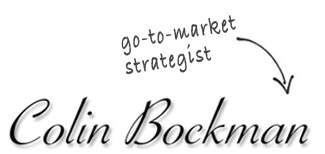
There has been much written on the use of words and phrases in sales training and theory. However, based on hard cold research with customers right here in Australia, we’ve found that successful communication depends as much on what you say as it does on how you say it.
Let me explain that.
When we are using common sentences we need to ensure the inflection is right. Of course, the words are still important. However, it’s how we say them, that is sometimes even more important.
In respect to some specifics – on a sales phonecall we have to choose our words even more carefully than when we are one-on-one as we can’t see their response; and on the phone we must continually check that our message is being received the way we intended, by using checking phrases such as “How does that sound?”, “Have I painted an accurate picture?”, “Am I making sense so far?’.
Oh, by the way, here’s the secret to ensuring that the words you choose (even if inadvertently they are not the most appropriate) do carry the message you intended – Simple! Believe in what you’re saying. That creates the natural tone which ensures the connotation is right and that creates trust.
Of course, no trust – no sale.
 Plastic sentences are a way of the past. Just because it sounded good coming out of someone else’s mouth doesn’t mean it will sound good when you say it.
Plastic sentences are a way of the past. Just because it sounded good coming out of someone else’s mouth doesn’t mean it will sound good when you say it.
Let’s look at the actual words often used in the sales process. You must recognise that there is no getting away from the fact that we all hold words in our own specific context, or should I say we all have an emotional reaction to words and it’s that emotion that can negatively or positively affect the result of your sales communication.
Here are some commonly used negative sales sentence and phrases, with the positive alternative following. (Often I’ll use ‘I’ or ‘me’, as from the customer’s point of view.)
No one likes to be sold anything. They often don’t like to buy either but we all love to own something.
The cost of the service makes me feel like I’m being hit hard whereas the investment helps me feel comfortable.
To sign anything might make me recall the teachings of my parents who told me to never sign anything whereas to approve it is OK as it has a better chance of making me feel comfortable about it.
If you asked me for a deposit it feels I feel like it’s –
- refundable, or
- it’s a holding figure;
But if you asked me for a partial payment or initial payment I’ve given you part of the total and I’ve made a mental ownership decision.
If you set out to prove anything to me I’ll set out to prove you wrong. However, share with me how the product will work for me in comparison to another and I’ll listen.
Inform me that you’re going to tell me and I’ll close my mind. Discuss it with me and I’ll open my mind. Or have a conversation and you will be talking to me in the typical language of today.
Ask me why I’m not going to buy and I’ll tell you a story which is not the real reason. Ask me for what reason and I’ll usually tell you the problem.
Use the sentence, I know this is right for you, and I’ll question it. Whereas is to infer that research indicates, surveys show, or other customers have experienced and you’ve got my attention.
Advise me that this is the best and I’ll question your statement, but tell me that it’s highly accepted and I’ll feel like I’m one the smarter decision makers. It’s just like when you say we sell more of these and I start to wonder what’s in it for you, but if you tell me public demand is higher for these, once again I will feel like I’m one of the smart buyers.
I guarantee you simply tells me that there could be a problem but our experience indicates tells me that there is no problem and so its safe to buy/own.
Say to me I don’t know and I’ll think you are incompetent. Tell me I’m not aware and I’ll accept that you’re prepared to find out.
There’s a heap more. So, be aware of what you’re saying and the effect you are having on the person you’re communicating with!
Ensure the words you choose are yours and not someone else’s – so you come across as sincere – not plastic.
Choosing to be aware of which words to use and when, is the first step in improving your sales process, then it’s a matter of choosing the phrases and sentences which fit with your style and personality. There are no absolute right and wrong words. However, by choosing to put the odds in your favour by always ‘couching’ your words wisely, will make a big difference to how responsive your customers are to you.
And, do pay attention to the emphasis you put on each word as indicated in the following example. As you read each line, notice how the complete meaning changes as you place emphasis on the italicised and bolded word.
I did not say I hit my dog.
I did not say I hit my dog.
I did not say I hit my dog.
I did not say I hit my dog.
Choosing to use appropriate sales words and phrases is choosing to be successful!


